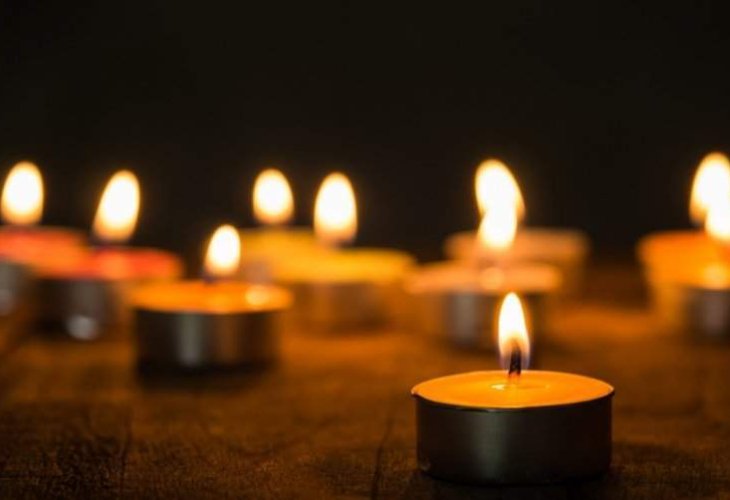Jewish Law
When Is Shivah Not Shivah? How Mourning Transforms into Rejoicing
When Yom Tov arrives, mourning does not just pause, it ceases
 (Photo: Shutterstock)
(Photo: Shutterstock)Shivah, the mourning period for close relatives, is so called because it lasts for seven days. Only it doesn’t always last for seven days.
Important as it is for relatives to spend a period of time mourning their loved ones, the arrival of a Yom Tov (but not Shabbat) supersedes the shivah, not only interrupting it but actually curtailing it.
A Shivah of Minutes
A person whose parent, child, or sibling passes away is called an avel once the levayah (funeral) has taken place, and must sit shivah. Public demonstrations of mourning (such as sitting on a low chair, not eating meat or drinking wine) are suspended on Shabbat but resumed immediately afterward. However, if a Yom Tov arrives, shivah immediately ends and does not resume after the Yom Tov. The same applies for the shloshim thirty-day mourning period for relatives, which stops if a Yom Tov intervenes.
Therefore, if someone is buried a few days or even just a few hours before Yom Tov begins, even if the burial took place less than an hour before sundown, the close relatives observe mourning only until Yom Tov begins, even if that means that they only sit shivah for an hour or less.
As long as the mourners removed their shoes or sat on the ground to mourn, shivah is considered to have begun and once Yom Tov starts, shivah ends and the mitzvah to “rejoice on your festivals” takes over.
This applies to all the Yomim Tovim: the three festivals of Pesach, Shavuot, and Sukkot; and also Rosh Hashanah and Yom Kippur. It does not apply to Purim or Chanukah (which are festivals of Rabbinic origin).
If the person was buried during the twilight period on Erev Yom Tov (bein hashemashot, the period between sunset and darkness), and the relatives did not sit shivah before Yom Tov began, they are not required to sit shivah after Yom Tov ends.
Missed Shivah
If someone is buried right before Yom Tov begins and the close relatives did not sit shivah in any manner, they must sit shivah for a full seven-day period after the Yom Tov ends.
This applies to someone who was physically able to sit shivah but:
- Didn’t know that his relative had passed away
- Didn’t know how to observe shivah properly
- For whatever reason did not sit shivah even though he knew he should
This does not apply to someone who:
- Was unable to sit shivah because he was ill or for any other genuine reasons, and therefore could not remove his shoes or sit on the ground
Meanwhile, until the Yom Tov is over, such a person should observe the private mourning customs that are observed even on Shabbat.
Washing During Shivah
Ordinarily, someone who is sitting shivah may not launder his clothes or put on clean clothes. He may not wash his body or his hair, or cut his nails. This remains the case even in honor of Shabbat.
However, when Yom Tov falls within shivah, an avel may launder his clothes in honor of the Yom Tov. It’s preferable to launder the clothes after halachic midday (chatzot) so that it’s obvious that the laundering is in honor of Yom Tov.
With regard to bathing and showering:
Ashkenazim may bathe or shower their entire body on Erev Yom Tov during shivah, in honor of the upcoming Yom Tov (although according to some opinions, it is preferable to only wash in cold water once Yom Tov has begun).
Sephardim should preferably not shower or bathe on Erev Yom Tov but instead wash their bodies on the night of Yom Tov itself (that is, right after Yom Tov begins). Warm water may only be used if it was heated before Yom Tov. (On Erev Pesach, Sephardim may bathe before Yom Tov begins.)
If Yom Tov falls on Shabbat, Sephardim may only wash in cold water that night or with cold water to which has been added a very little hot water that was heated before Shabbat. Alternatively, they may wash only the face, hands, and feet in warm water that was heated before Shabbat.
Ending Mourning before Yom Tov
Aside from laundering and bathing, the other halachot of aveilut (mourning) (such as refraining from eating meat and sitting on a low chair) apply until Yom Tov actually begins.
Mourners do not put on Yom Tov clothes or leather shoes, or sit on a regular chair, until Yom Tov.
On Erev Pesach, however, Ashkenazim customarily conclude aveilut at chatzot, and Sephardim may also do so.
Nonetheless, if someone is buried only after chatzot on Erev Pesach, the close relatives should sit shivah for a short period and if they wish, they may continue mourning until Yom Tov begins.
Erev Yom Kippur
Both Ashkenazim and Sephardim may bathe and immerse in a mikveh (ritual bath) on the day leading up to Yom Kippur, as bathing and even washing parts of the body in cold water is forbidden on Yom Kippur itself.
Even though it is a mitzvah to eat special meals on Erev Yom Kippur, mourners should preferably sit on a low chair or on the ground.
The Memorial (Azkarah) and Mourning Candle
Even though Yom Tov cancels the shivah, the candle that was lit at the start of shivah is left burning throughout the first seven days.
The azkarah is held on the seventh evening, even if it falls during Chol Ha’moed.
Visiting the Grave
The custom is to visit the grave on the seventh day at the end of shivah, but if this falls during Chol Ha’moed, it should be postponed until after the holiday.

